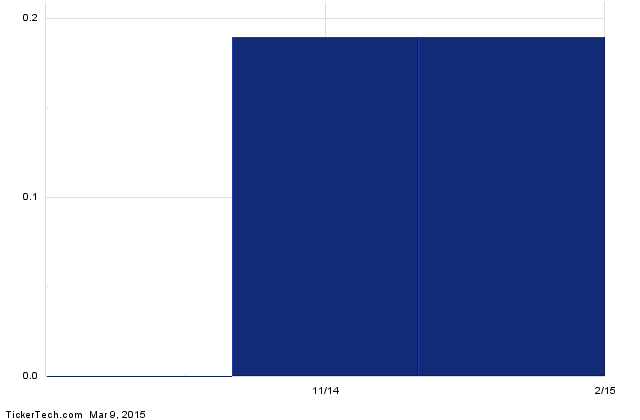Four Volatile ETFs For Active Traders Business Insider
Post on: 2 Июнь, 2015 No Comment

Recent Posts
As the ETF industry has continued to expand, now with 1,300+ products to choose from, investors now have more ways than ever to make a play on their favorite market, sector, or region. One of the biggest advantages of ETFs over their mutual fund counterparts is their abundant liquidity; they can be traded intraday just like any other stock, opening up the world to active traders seeking to cash in on the lucrative opportunities offered through the exchange traded world. In fact, there are numerous products that are designed specifically for traders to use on a daily basis, as they offer exposure to volatile sectors that tend to exhibit large movements on an intraday basis.
One popular option for trading comes in the form of volatility products; funds that track the VIX (CBOE Volatility Index ) tend to experience large movements on a daily basis. But not all investors are comfortable with investing in VIX for one simple reason; it technically doesn’t exist. The volatility index is not a tangible benchmark or asset that someone can point to or observe, it is more of a hypothetical benchmark designed to reflect the volatility exhibited in markets for any given day. While it certainly offers traders lucrative opportunities, it can often be very difficult to predict and is notorious for leaving investors with their heads scratching given its erratic performance.
Luckily for traders, there are still plenty of other products available for actively moving in and out of positions that track “real” assets or indexes. But finding the right ETF for trading may be the hard part, as some products intended for traders simply aren’t volatile enough, or do not present themselves as an attractive opportunity [see also ETF Insider: Equities Poised To Pop ].
Volatility Explained
Volatility is simply a particular asset’s deviation of returns over a specified period of time, but when it comes to volatility calculations, such as those featured on our fundamentals pages, the metrics are not always clear. Using 200-Day Volatility as an example, this metric first finds all of the closing prices for an asset over the trailing 200 day period. It then takes the average of the prices, and finds the difference between each individual day’s price and the average it just calculated. Afterwards, it squares this difference to get a result which is known as the variance (or standard deviation). Finally, the variances of each day are summed and then the square root is taken of that figure, displaying the result as a percentage and voilà, volatility.
To give you a better idea of how this is actually applied, SPY. what many would consider to be the benchmark for equity funds, is currently exhibiting a 200 day volatility of 13.8%, but as the observed time periods shorten, the resulting volatility can be drastically different. Due to a process known as heteroskedasticity, investors need to monitor volatility often. As much fun as it is to say, heteroskedasticity simply means that the standard deviations of a given security will not be constant over time, meaning that an ETF that presents high volatility now, may be relatively stable in a few months time [see also Three Intriguing Alternatives To Popular ETFs (SPY, XLF, FXI) ].
Depending on a trader’s time-frame, there are metrics for numerous period of time of volatility ranging from 5 to 200 day periods. In the current environment, one could argue that any investment would be volatile, but looking at a longer term metric like the 50 or 200 volatility average will give investors a good idea of which products remain volatile despite what the short-term environment is like. Also, investors can now use our enhanced charting capabilities to help find the best option available for their objectives. Below, we outline four ETFs that offer high volatility and likewise track a real asset or market to allow investors to make a more comfortable allocation in their daily trades:
Dow Jones-UBS Cotton Total Return Sub-Index ETN (BAL )
This ETN is a popular commodity option that grants exposure to cotton futures contracts. Like many of the soft commodities, it is not unusual to see cotton turn in a day of a 3%-4% movement, making BAL a lucrative opportunity for those with a stomach for risk. Cotton’s current environment is also volatile itself, being that prices are bottoming out from recent historic highs, the fluffy commodity is having a hard time find a clear trend, making it a very volatile option. BAL has a current 20 day volatility of about 49% and a 200 day volatility of 43.8%, making it the most volatile option on this list. These hefty volatility figures will give some traders a soft spot for this cotton ETN [see also Don’t Fight The Curve: Five Commodity ETFs in Backwardation ].
MSCI France Index Fund (EWQ )

EWQ offers exposure to the French equity market. and is something of a dinosaur in ETF terms, as it has been around since 1996. Despite its age, this fund remains very popular as it trades an average of approximately 450,000 shares a day [see EWQ Technicals ]. The fund features major companies like Total SA and BNP Paribas in its top holdings, as it focuses primarily on the large cap sector of the French economy. Traders may be surprised to learn that this large cup fund is relatively volatile, and it currently exhibits a 20 day volatility of 31.1% and 200 day volatility reading of 28%.
Dow Jones-UBS Sugar Subindex Total Return ETN (SGG )
Another soft commodity product making the list, SGG seeks to invest in futures contracts for sugar. Sugar’s high intraday movements make for a potentially sweet return to investors, but also offer up a risk of a position turning sour. While sugar gradually worked its way up in up the first half of 2011, the last few weeks have seen the futures begin to tumble, with high gains/losses perfect for traders who feel comfortable establishing position in this fund. SGG has a current 20 day volatility of about 42.5% and a 200 day volatility of 38.1% [see also Seven Best ETF Performers Of Q1 (And Five Of The Worst) ].
Silver Trust (SLV )
This iShares product is among the most popular options for gaining exposure to silver, as SLV is designed to track physical silver bullion as opposed to the futures-based methods that many commodity products apply. Silver is often seen as somewhat of a safe haven next to gold, as many will flee equities on rough days and buy up this precious metal. But on bull market runs, many tend to sell off the metal for better greener pastures, which is what makes this fund incredibly volatile [see Lessons From The Leveraged Silver ETF ]. Many will use this ETF as a buy and hold investment and rightly so, as its 5 year performance posts a robust gain of over 235%. But while silver may be trending up, it certainly has an unpredictable way of getting there, as SLV has a current 20 day volatility of 35.7% and a 200 day volatility of 48.5%.
Disclosure: No positions at time of writing.














